(Published on: Philippine Daily Inquirer)
July 31, 2009
While much has been written about the brand, little is known about Louis Vuitton, the visionary who founded it in 1854.
In 1859, shortly after Monsieur Vuitton revolutionized how people traveled with his waterproof flat-lid slat trunks made from poplar wood and covered with “Trianon gray,” he decided to move his workshop to a larger land in Asnières. It was only in 1871 that Vuitton and wife Clémence-Émilie lived there.
Vuitton’s grandson, Gaston-Louis, decided to turn the family home into a private museum.
Art Nouveau
On a warm Parisian spring morning, I was driven to Asnières-Sur-Seine, a few miles outside Paris,
a few miles outside Paris, to visit the place of origin of the Vuittons. Behind the gated compound in Rue Louis Vuitton (formerly Rue du Congres)
to visit the place of origin of the Vuittons. Behind the gated compound in Rue Louis Vuitton (formerly Rue du Congres)  is the beautiful ancestral home.
is the beautiful ancestral home.

Busts of Louis Vuitton and Georges Vuitton greeted me at the threshold. I was transfixed by the stylized walls, chandeliers and ceiling fashioned in the Art Nouveau style, 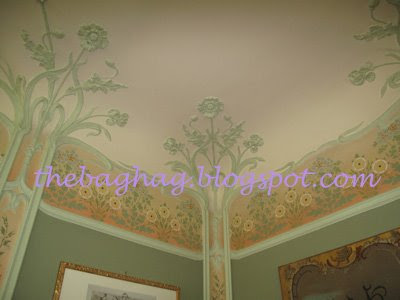 a rather unusual choice, considering the bourgeoisie then preferred more somber décor.
a rather unusual choice, considering the bourgeoisie then preferred more somber décor.
Exquisite, large stained-glass windows festooned with floral and plant-inspired motifs made by Janin, the master glassmaker in Asnières, were spaced throughout the house, making it bright and airy. 
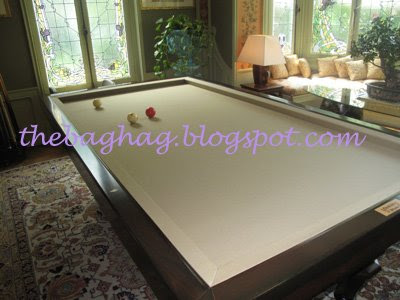 The Vuittons’ love for Chinoiserie was evident in their choice of furniture and in the centerpiece of the family sitting room-the Oriental blue ceramic fireplace.
The Vuittons’ love for Chinoiserie was evident in their choice of furniture and in the centerpiece of the family sitting room-the Oriental blue ceramic fireplace.
Frames of old family photographs were clustered on tables throughout the room, a few antique Vuitton trunks doubling as tables.
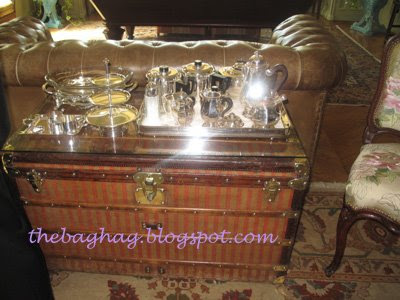
A climb up the narrow wooden staircase led to the second floor, which has been converted into the Louis Vuitton “Ode to Travel” museum. 








 It housed Vuitton’s significant period creations-the historic Steamer bag designed in 1901; the Malle-auto to accompany the automobile in 1923;
It housed Vuitton’s significant period creations-the historic Steamer bag designed in 1901; the Malle-auto to accompany the automobile in 1923;  the iconic Keepall, the first supple travel bag made in 1924;
the iconic Keepall, the first supple travel bag made in 1924;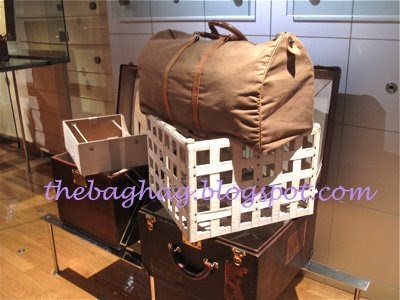 the different flat-lid slat trunks in the Trianon gray-stripes, Damier canvas,
the different flat-lid slat trunks in the Trianon gray-stripes, Damier canvas, and the monogram canvas; as well as creations born of special collaborations with designers Manolo Blahnik,
and the monogram canvas; as well as creations born of special collaborations with designers Manolo Blahnik,  Azzedine Alaïa, even actress Sharon Stone.
Azzedine Alaïa, even actress Sharon Stone.
There was also an exhibit of possible references or inspirations for Georges Vuitton’s design of the classic monogram — it was meant to be a deterrent to counterfeiting.
it was meant to be a deterrent to counterfeiting. 
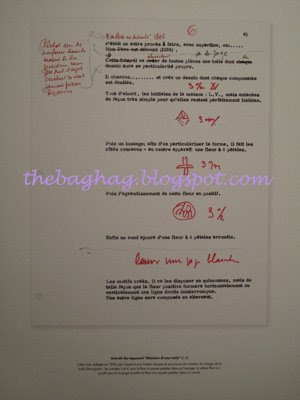 Today it must be the most faked icon; isn’t that ironic?
Today it must be the most faked icon; isn’t that ironic?
After the house and travel museum tour came the short walk to the workshop. As the Asnières atelier was being constructed, Monsieur Vuitton used the most modern architecture principles, combining iron and glass in the style similar to Baltard’s work in Les Halles.
There were over 150 craftsmen who have worked in Asnières. Around for 20 years or so, they continue to train young people on internships from nearby schools, to pass on their skills and the company’s vision.
While there are now 17 workshops worldwide to produce bags and other merchandise for the 435 (and growing) global boutiques, the Asnières atelier remains responsible for the production of bags used on the runway, exotics, special-order pieces, custom-made trunks and hard cases.
Raw materials
On the ground floor of the atelier is a room with large picture-windows overlooking the gardens, where trunk makers cut poplar and varnished beech wood used for the trunks and hard-sided luggage.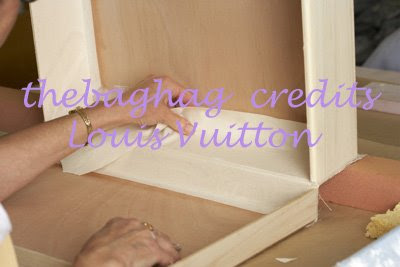
There is a stock room with boxes of raw materials on library shelves-from zippers, zipper pulls, buckles to bag handles. In a larger and very impressive temperature/humidity-controlled room is housed all the leather, again as in a library with top-to-bottom shelves.
I saw thick stacks of natural cowhide leather, rolls of different colored Epi leathers, sheets of Madras goat leather for the Suhali line, as well as other kinds of top-quality grained and dyed leathers.
The atelier’s second floor is the manufacturing division for canvas and regular leather goods. I saw whole python skins draped over metal racks, with a worker scrutinizing each one for flaws before sending them for cutting. Another was smoothening a whole sheet of Taiga leather, also looking for flaws and grading the leather.
Each leather sheet is sectioned and graded. The highest grade goes to making the body panel of the bag, while the lower grades go to making the sides and bottom parts of the bag.
There are sewers on this floor, one of whom I saw putting together the Monogram Eclipse Mini-Pochettes for the upcoming Fall collection.
Exotics
The third floor is where all the exotics and special orders are made. I saw the same pre-cut python skin panels already being sewn to make the Galliera bag.
I saw the same pre-cut python skin panels already being sewn to make the Galliera bag.
The third floor is also the office for special orders from around the world, from trunks and suitcases to a multiple iPod holder case and a “traveling casino” trunk in classic monogram canvas that open up to show an actual roulette wheel, complete with specially-made LV-monogrammed playing cards, chips, and even a personalized green felt tabletop.
In a corner, I came across a craftswoman putting finishing touches on the exclusive and hush-hush Sac Louis bag. Then there were the craftsmen working on Alzer structure luggage-a new line of the same model in classic monogram canvas trimmed in black leather with palladium hardware and studs, alongside the traditional classic line trimmed in natural cowhide with brass hardware and studs.
Renewed respect
I left the museum with a renewed respect for the brand and what it stood for, having been given the unique opportunity to learn the history of the malletier and his family who had the vision to continue centuries-old traditions.
In that mindset, I headed straight for the LV flagship store on Champs Elyseés, this time to look at the bags I had seen earlier being made at the Asnières atelier– in a very different light.
***** INQUIRER ARTICLE ENDS*****
Additional credits: LV workshop photos courtesy of Louis Vuitton; additional information from the book, Louis Vuitton: The Birth of Modern Luxury

oh Mrs. T! you are so blessed to experience this, you truly deserve it! thanks for all the info. and great pics. **i love the exotic speedy!
very nice post/article. thanks for sharing!
This one really is for the books, Mrs. T. Thanks for sharing it with us. Kudos as well for a very well-written article…yet again. Keep ’em comin’.
Mrs. K
ps: I heart your new ‘baby’…the Sac Louis. Hope you’ll post a picture when you take her out for a spin 😉
I’m super inggit…
One thing I can say: WOW. I would’ve felt like I’d died and gone to heaven!
Mrs. T.! I just checked out LV’s site and I’ve discovered that their prices dropped– quite a lot. Am I dreaming?